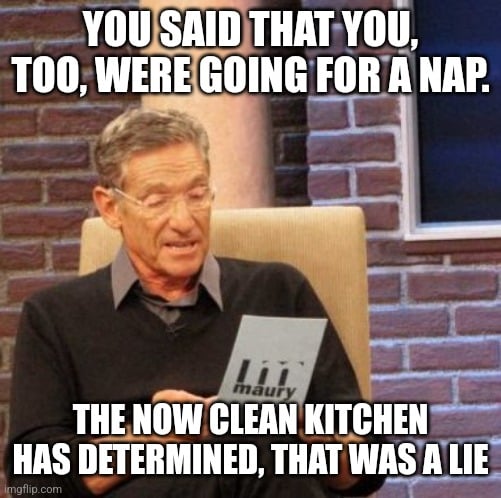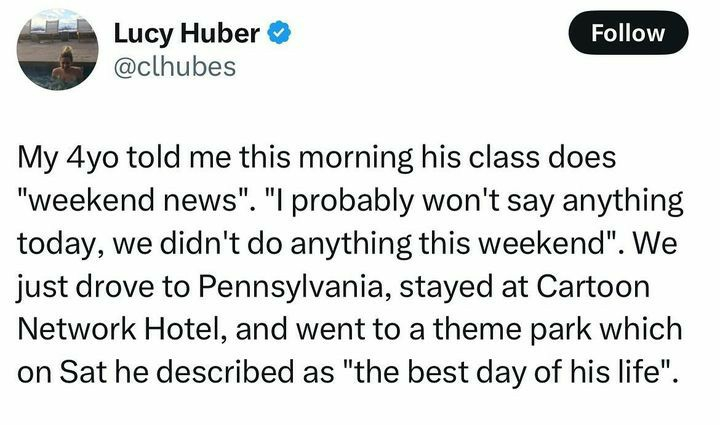Hello,
I am a young parent and innovative designer with a rich background in Psychology, Developmental Studies, Medical, and Business fields. While the education model I propose may seem ambitious, I encourage you to view it as much more than an academic plan—it’s a revolution in how we prepare our children for life, success, and financial independence. It’s a vision of a comprehensive, meaningful education that is designed not just to teach, but to truly engage and empower.
I grew up attending a small high school in Indiana, where opportunities were limited. The most notable option was a Business Pathway through Ivy Tech, which was an excellent opportunity for some, but there were few other choices. This lack of resources is something many schools continue to struggle with, leaving students feeling disconnected and uninspired. I believe school should be a place of excitement, where students are challenged and supported as they grow, not trapped in a rigid system that feels irrelevant to their futures.
That’s why I created Lifetime Learning Academy, an institution that embodies the idea of a Hall of Unlimited Knowledge, where every student is offered the chance to flourish based on their own path. Our Academy recognizes that not every student needs complex math designed for scientists or deep dives into language arts unless that aligns with their passion. Here, education is personalized. Whether your child dreams of becoming a business leader, a skilled tradesperson, or an author, we ensure their learning experience is relevant, purposeful, and tailored to their individual goals.
In our Academy, we empower students with choices. After 9th grade, attendance isn’t a mandate, it’s a decision. Recorded, flexible online classes allow students to engage in their education when and how it suits them best. This approach fosters autonomy and respect, creating an environment where students thrive because they feel valued and understood.
Our unique program also offers a 3-day school week, with 9-hour days, which maximizes both learning and personal time. This balance allows students to immerse themselves in their education while also pursuing other interests or relaxing, ultimately preparing them for the demands of adult life.
Now, I’m reaching out to you for feedback and collaboration. Let’s refine this idea together. Lifetime Learning Academy isn’t just about changing how we educate—it’s about creating a future where every student has the freedom to pursue knowledge that matters to them. Together, we have the power to revolutionize education and make a lasting difference.
Lifetime Learning Academy: A Place Where Curiosity Grows and Futures Thrive
A Holistic Approach to College and Career Readiness with Personalized Health Tracking
Welcome to Lifetime Learning Academy, where we empower students with the knowledge, skills, and independence to thrive in their chosen career paths while fostering a deep connection to health, well-being, and financial independence. We believe in giving students the tools to shape their futures, whether they choose to pursue higher education, enter the trades, or dive straight into the workforce. Our innovative, holistic approach ensures that students leave our academy not just with academic qualifications, but with the personal development, life skills, and real-world experience necessary to succeed in all aspects of life.
The Ultimate School for College and Career Readiness
At Lifetime Learning Academy, we understand that the future looks different for every student, which is why we tailor education to meet the diverse needs of each individual. We provide specialized pathways, equipping students with the qualifications, certifications, and hands-on experience they need to enter fields like healthcare, business, and the trades—without requiring further external education unless they choose to specialize further.
Mathematics Tailored for Future Success
In grades K-7/8, students develop a solid foundation in arithmetic, algebra, and geometry, establishing the problem-solving skills that are essential for future learning. As students progress through grades 8/9-12, math courses are carefully customized to align with their chosen career goals. For those pursuing trades, practical math and geometry courses emphasize relevance, while students on STEM pathways delve into advanced subjects like calculus. This approach ensures that students only focus on math that’s directly beneficial to their futures, removing unnecessary academic burdens.
Specialized Career Pathways
Lifetime Learning Academy offers three comprehensive career pathways that fully equip students for life after high school:
Medical Pathway: Courses in medical terminology, anatomy, and nursing practices provide the foundation for careers in healthcare.
Business Pathway: Classes like business management, entrepreneurship, and financial accounting prepare students for success in the business world.
Trade Pathway: Hands-on training in fields like welding, electrical work, and construction—paired with relevant certifications—ensures students are job-ready immediately after graduation.
Financial Empowerment Program
One of our most distinctive features is the Financial Empowerment Program, which fosters financial independence and responsibility from an early age. Beginning in kindergarten, students earn money through internships and projects, setting the stage for lifelong financial security.
Early Earnings and Savings: Starting in kindergarten, students earn $12 per hour, participating in learning-based internships and projects. Older students earn $20 per hour as they take on more advanced work in their chosen career pathways.
Post-Graduation Earnings: Graduates can continue earning up to $28 per hour, providing a strong financial foundation as they transition into adulthood.
Financial Guidance: Starting at age 16, students are assigned a Financial Guider who assists with savings, financial aid decisions, and offers lifelong support.
By the time they graduate, students will have accumulated significant savings, giving them the financial confidence to pursue their dreams. With just a modest $100 education fee per year (waived for qualifying families), we ensure that every student can access these opportunities without financial barriers.
Health and Well-being Tracking
At Lifetime Learning Academy, student health and well-being are just as important as their academic success. Our cutting-edge health tracking system monitors key health metrics—like sleep patterns, physical activity, and stress levels—ensuring students maintain a healthy balance between school and life. Parents have access to their child’s health data and can share observations with staff, helping us to tailor support to meet individual needs.
Students are empowered to take control of their own well-being, with the option to override mandatory breaks if they demonstrate a deep enough understanding of their body’s limits, provided it doesn’t put their life at risk. This unique balance ensures that students can pursue learning every day, while respecting the importance of rest and recovery.
Innovative Learning Through Nature: The Tree Connection
Starting in 4th grade, students form a unique personal bond with a tree, symbolizing their own growth and development. This lifelong connection fosters emotional resilience, environmental awareness, and a deep respect for the natural world—traits that will serve them well in their adult lives.
Comprehensive Pathways for College and Career Readiness
Our commitment to college and career readiness extends beyond the classroom. At Lifetime Learning Academy, students receive:
Advanced College Prep Courses: For students aiming for higher education, our rigorous courses ensure they are fully prepared to succeed in college.
Trade Certifications: Students pursuing trades gain hands-on experience and earn valuable certifications like OSHA, making them immediately employable upon graduation.
Extracurricular Activities and Internships
Students have the opportunity to explore their passions through a variety of extracurricular activities, including sports, creative writing, robotics, and cultural clubs. Internships provide real-world experience, allowing students to apply their knowledge in practical settings while building impressive resumes.
A School That Shapes the Future
Lifetime Learning Academy isn’t just a school—it’s a launchpad for lifelong success. We combine academic rigor with personalized health tracking, financial empowerment, and a deep connection to nature, creating an environment where students can thrive. Our flexible three-day school week gives students time to explore, learn, and have fun, while our robust support system ensures they aren’t overexerting themselves. Whether students wish to train almost 24/7 or take additional classes for personal growth, we work with them to set healthy boundaries and maintain balance.
At Lifetime Learning Academy, students gain not only an education, but also the tools to navigate adulthood with confidence. By graduation, they will have earned valuable certifications, accumulated savings, and developed the financial and personal independence needed to pursue their goals—whether that means college, a trade career, or entrepreneurship.
Join us at Lifetime Learning Academy, where students’ curiosity flourishes, their futures are bright, and their potential knows no bounds.
Overview of Earnings and Opportunities
Grades K-7/8:
Earnings: $12 per hour
Annual earnings: $15,552 - $32,400
Total accumulated by 7th/8th grade: $108,864 - $124,416
Grades 8/9-12:
Earnings: $20 per hour
Annual earnings: $25,920 - $32,400
Total accumulated by 12th grade: $129,600 - $233,228
Post-12th Grade:
Earnings: $25-$28 per hour, continuing education and job opportunities
By graduation, students will have accumulated not just knowledge, but significant savings to secure their future. They’ll also have the personal and professional skills necessary to succeed in whatever path they choose.
Classes & Extracurriculars
Our core curriculum covers essential subjects like math, science, and language arts, while specialized pathways prepare students for careers in medicine, business, or the trades. From hands-on internships to advanced academic prep, every student gets the opportunity to engage in meaningful, real-world learning.
Electives range from technology, engineering, and the arts to physical education and combat/survival skills. Leadership roles, cultural clubs, and sports help students build social connections and gain valuable life skills.
Internships offer practical experience in students’ chosen fields, giving them a head start on their careers and ensuring a seamless transition to the next stage of their lives.
Health & Well-being
We prioritize mental and physical health with comprehensive medical services, mental health support, and a secure, nurturing environment. Our holistic approach ensures students grow into well-rounded, resilient individuals.
At Lifetime Learning Academy, we believe that education should be a transformative journey, one that empowers students to discover their passions, grow in confidence, and seize the future with both hands. Join us on this journey and watch your child’s potential soar!





